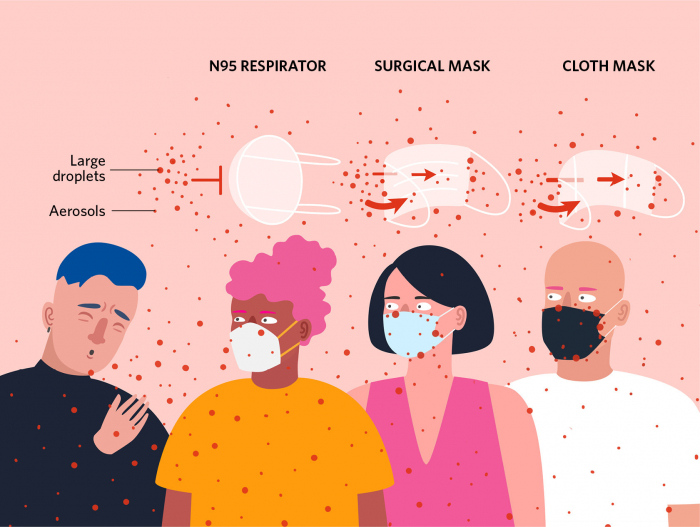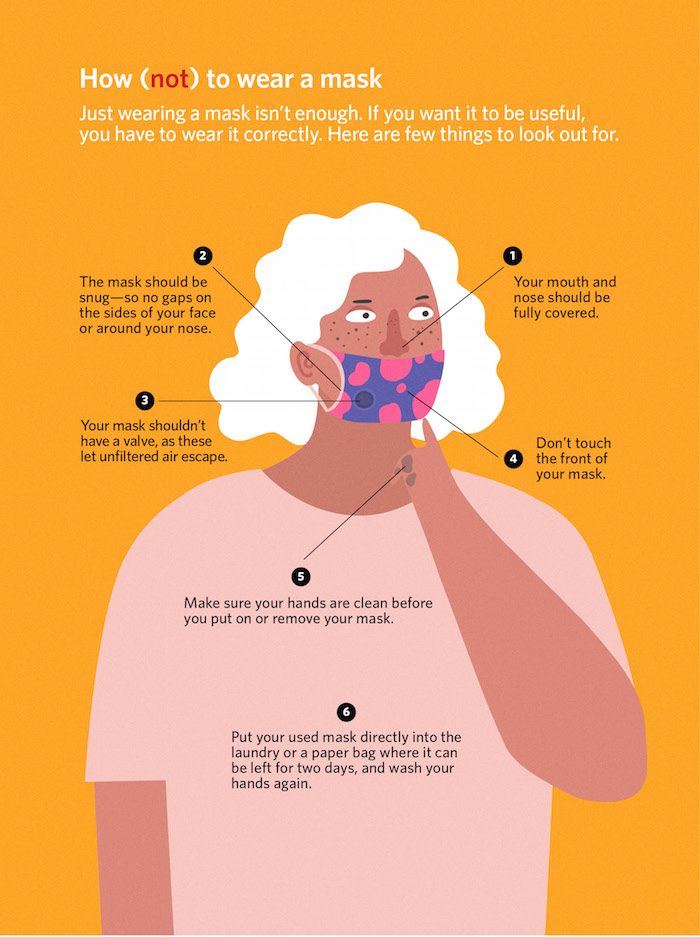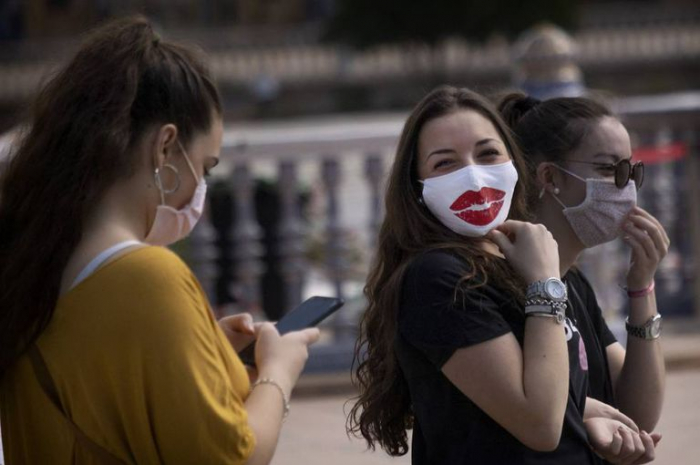Face masks have been a matter of intense debate during the COVID-19 pandemic. Early on, several government officials and health authoritieswere discouraging healthy people from wearing masks—noting that there was little evidence for the practice’s ability to prevent spread among the general public and citing concerns that protective face coverings, which were desperately needed by healthcare workers, were in short supply. Gradually, however, governments began to either require or recommend that their citizens wear face masks in public. In June, the World Health Organization (WHO) recommended widespread mask-use as a way to prevent coronavirus transmission. One model estimates that if at least 95 percent of people wear masks in public between June and October, approximately 33,000 deaths could be avoided in the US.
There are three broad categories of face coverings: tight-fitting masks known as N95 respirators that are designed to filter out both aerosols (often defined as particles that are smaller than 5 micrometers in diameter) and larger airborne droplets, loose-fitting surgical masks that are fluid resistant and capable of filtering out the bigger particles, and cloth masks, which vary widely based on how they’re made.

N95 respirator: Tight-fitting single-use masks typically made with synthetic materials such as polyester and polypropylene. These masks are able to filter out at least 95 percent of both large airborne droplets and aerosols.
Surgical/medical masks: Loose-fitting single-use masks made with three or more layers of synthetic materials. These can filter out large airborne particles, but some aerosols can leak through, and particle-containing air is able to flow around the edges.
Fabric masks: These often-homemade masks vary widely in their construction and effectiveness. Aerosols are likely to leak through, and particle-containing air is able to flow around the edges. With appropriate washing or a couple of days to decontaminate, fabric masks are reusable.

© SONJA PINSKER
A growing body of research supports the use of all three types of masks, though the quality of evidence varies. One of the most comprehensive examinations to date, published in The Lancet in early June, systemically assessed 172 observational studies—mostly conducted in healthcare settings—looking at the effect of physical distancing, face masks, and eye protection on the transmission of SARS-CoV-2 and two related coronaviruses. The results revealed that N95 respirators provided 96 percent protection from infection and surgical masks (or comparable reusable masks made with 12 to 16 layers of cotton or gauze) were 67 percent protective.
While research on cloth masks is much more limited, one group of researchers demonstrated that, in the lab, multilayer masks made of hybrid materials (cotton and silk, for example) could filter up to 90 percent of particles between 300 nanometers and 6 micrometers in size. However, it’s important to note this is only the case when there are no gaps around the edges of the mask, which are often present when people wear cloth or surgical masks. Indeed, the researchers’ findings suggest that gaps around any mask can reduce filtration by 60 percent or more. Still, scientists using computational models have reported that, in general, widespread use of facemasks, when combined with lockdowns, may help prevent future waves of infection.
“We’re recommending that N95s still be primarily saved for the healthcare situation,” says Kirsten Koehler, a professor of environmental health and engineering at Johns Hopkins University. “For individuals in the public, wearing a fabric mask is probably still the way to go.”
None of these masks are going to be perfect, especially against the aerosols.
—Kirsten Koehler, Johns Hopkins University
There are several factors, including the number of layers and type of material they are made from, that contribute to how effective a mask will be, explains Raina MacIntrye, a professor of global biosecurity at the University of New South Wales in Australia. According to the WHO, fabric masks should ideally have at least three layers: an inner layer made with absorbent material (e.g., cotton), an outer layer with water-resistant material (e.g., polyester), and a middle layer (made with absorbent or water-resistant material) to act as a filter. In addition, MacIntrye adds, “the design should fit around the edges of the face because air will flow down the path of least resistance.” In other words, if there are gaps on the sides of your mask, your breath will slip through those cracks instead of being filtered through the mask itself.
Although evidence is building to support the use of masks to stem the coronavirus’ spread, many questions remain, such as whether the coronavirus spreads through aerosols or just through larger respiratory droplets. There is also little research on the efficacy of face masks, particularly cloth ones, in stopping the spread of COVID-19 in community settings, Julii Brainard, a senior research associate at Norwich Medical School in the UK, tells The Scientist in an email.
Amidst the uncertainty, what is clear is that mask wearing is not the only action people should take to slow the spread of COVID-19, Koehler says. “None of these masks are going to be perfect, especially against the aerosols. You want to continue to encourage people to work from home, avoid being crowds—things like that are going to work, regardless of how good your mask is.”
The Scientist
More about: masks
















































